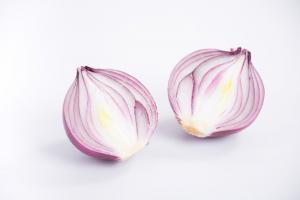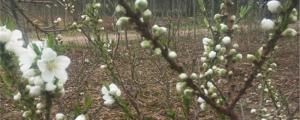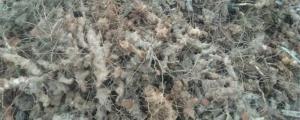How to Save a Dying Palm Tree House Plant
As one of the most common house plants, palm trees are valued for their tropical appearance and easy-to-grow nature. However, like any other plant, they can become sick and ultimately die. If you notice that your palm tree is not thriving, there are a few things you can do to save it before it's too late.
1. Identify the Problem
Before you can save your dying palm tree, you need to figure out what is causing the problem. It could be a disease, pests, overwatering, underwatering, or a combination of different factors. Observe your plant carefully and look for any signs of discolored or wilting leaves, spots, or any other unusual symptoms that could indicate a problem.
2. Improve Light and Temperature Conditions
Palm trees require bright light and warm temperatures to grow healthily. If your plant is not getting enough light, it could be a reason for its poor condition. Move your palm tree to a brighter location, preferably near a south-facing window, and avoid exposing it to drafts or direct sunlight. Similarly, ensure that the temperature around the plant is between 60°F and 80°F (15°C and 27°C), and is consistent throughout the day and night.
3. Adjust Watering and Humidity
A common reason for palm tree decline is improper watering. Overwatering can cause root rot and other fungal diseases, while underwatering can lead to dehydration and wilting. Check the soil frequently and only water when it feels dry about an inch deep. Additionally, palm trees need a humid environment to thrive, but the air inside our homes is often too dry. Consider using a humidifier or placing a tray of water near the plant to increase moisture levels.
4. Address Pest and Disease Issues
If you suspect that pests or disease are affecting your palm tree, it's essential to act quickly to prevent further damage. Common pests that infect palm trees include spider mites, mealybugs, and scale insects, and can be treated with insecticidal soap or neem oil. Diseases like Fusarium wilt, ganoderma butt rot, and lethal yellowing require proper identification, and the appropriate treatment plan may include removing affected fronds, applying fungicides or antibiotics, or removing the entire plant.
5. Provide Nutrient Support
If your palm tree is lacking essential nutrients, it can lead to stunted growth, yellowing, and other symptoms. Use a high-quality fertilizer specifically formulated for palm trees, and apply it according to the instructions on the package. Too much fertilizer can also harm the plant, so be careful not to overdo it.
Conclusion
Palm trees are beautiful and add a tropical touch to any home. However, they require proper care and attention to thrive. By identifying and addressing any issues affecting your palm tree, providing the right light, temperature, water, and nutrient support, you can help save it from dying, and ensure it continues to bring joy and beauty to your home for many years to come.

 how many times do yo...
how many times do yo... how many planted tre...
how many planted tre... how many pine trees ...
how many pine trees ... how many pecan trees...
how many pecan trees... how many plants comp...
how many plants comp... how many plants can ...
how many plants can ... how many plants and ...
how many plants and ... how many pepper plan...
how many pepper plan...
































